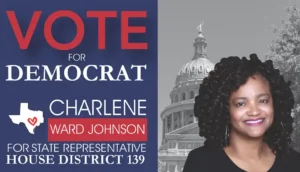By: NNPA
More than one in three Black community college students are in poverty, and widespread inequality in community colleges deepened throughout the pandemic for Black students facing basic needs insecurity.
According to a new report from the Joint Center for Political and Economic Studies on the state of Black students at community colleges, an alarming 70 percent of Black students experienced food or housing insecurity or homelessness during the COVID-19 pandemic.
The report highlighted that while Black students remain disproportionately represented in community colleges, policy barriers prevent the system from producing equitable outcomes.
“Black workers are struggling to make ends meet during this health and economic crisis. Community colleges provide a path forward to ensure workforce readiness for all, but there are barriers holding back Black students from reaching their full potential,” Dr. Alex Camardelle, the director of workforce policy at the Joint Center, said in a news release.
“On average, Black students at community colleges experience lower graduation rates and earn tens of thousands of dollars less after graduation while having to take on more debt than their peers to pay for school,” Camardelle stated.
He noted that things should be different.
“With targeted basic needs support, child care, improved transfer pathway policies, and better evaluations of community college outcomes by race, our policymakers can do right by Black community college students,” Camardelle added.
“And the biggest takeaway of all — making community colleges tuition-free will benefit Black students the most.”
Joint Center researchers said basic needs insecurity is also closely associated with enrollment declines.
“While COVID-19 emergency funds authorized by Congress pushed community colleges to introduce more support for meeting students’ basic needs, barriers to accessing those supports remain,” study authors found.
For example, 68 percent of Black male students at community colleges experience basic needs insecurity.
Still, only 31 percent of those with need accessed on campus resources meant to connect students with aid because too few knew they were available or do not know how to apply, the researchers discovered.
Meanwhile, the authors concluded that Black student enrollment at community colleges has steadily declined over time and has dropped during the COVID-19 pandemic.
Among the chief findings:
• From fall 2019 to fall 2021, enrollment fell 18 percent for all Black students and 23.5 percent and 15 percent for Black men and Black women, respectively.
• Black community college students experience the lowest graduation rates when compared to their peers of other races and ethnicities.
• The gap between Black and white graduation rates more than doubled from a four-percentage point gap in 2007 to an 11-percentage point divide in 2020.
• The typical Black community college graduate earns $20,000 less per year than their classmates.
• White households with workers who hold a high school diploma earn $2,000 more than Black community college graduates.
• Over two-thirds (67 percent) of Black students borrowed money to pay for community college compared to 51, 36, and 30 percent of white, Hispanic, and Asian students, respectively.
Further, researchers found that Black community college graduates owe 123 percent of the original amount they borrowed 12 years after beginning their community college journey.
View the full report here.










